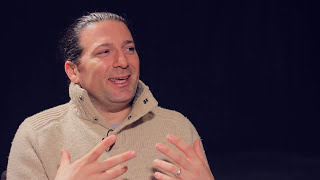In Chapter 7 of 19 in her 2011 Capture Your Flag interview with host Erik Michielsen, Stacie Grossman Bloom answers "What Did You Find Most Challenging About Teaching College Biology at Bard College?" Teaching biology at Bard College while doing her post doc work at Rockefeller University, she finds it easy to connect with college students. She uses the opportunity to explore career options and find out if teaching is a good fit. Teaching one college class helps Grossman Bloom rule out that as a career option and she continues using the exploration and trial approach in other pursuits, including a role at Nature Medicine. Grossman Bloom is the Executive Director at the NYU Neuroscience Institute at NYU Langone Medical Center. Previously, she was VP and Scientific Director at the New York Academy of Sciences (NYAS). She earned her PhD in Neurobiology and Cell Biology at Georgetown University and did a post-doctoral fellowship at Rockefeller University in New York City. She earned her BA in Chemistry and Psychology from the University of Delaware.
Transcript:
Erik Michielsen: What did you find most challenging about teaching a biology class at Bard College?
Stacie Grossman Bloom: College students.
Erik Michielsen: How did you connect with them?
Stacie: As a post doc it wasn’t that hard to connect with a college student. I still felt like that was kinda my life. I was making no money. I was in jeans and sneakers all the time. I felt like a kid still and I felt like a student still. I think they probably looked at me very differently.
At the time I was trying to explore career options for myself. I thought, “maybe I’d like to be a college professor.” And that was a way for me to rule it out.
But it was a great opportunity to see if that was a good fit for me.
Erik Michielsen: What did you learn about yourself through the experience?
Stacie Grossman Bloom: I learned that for me, it was important for me to do trial runs of things before I went full-fledged into them. When I started at Nature and left the lab, I was doing it just two days a week as an intern. That’s what really was a good way for me to see, to test the waters. And, same thing with teaching. So, take on one class at a college, try it out, see if I like it. I didn’t like it, so I didn’t do it.























